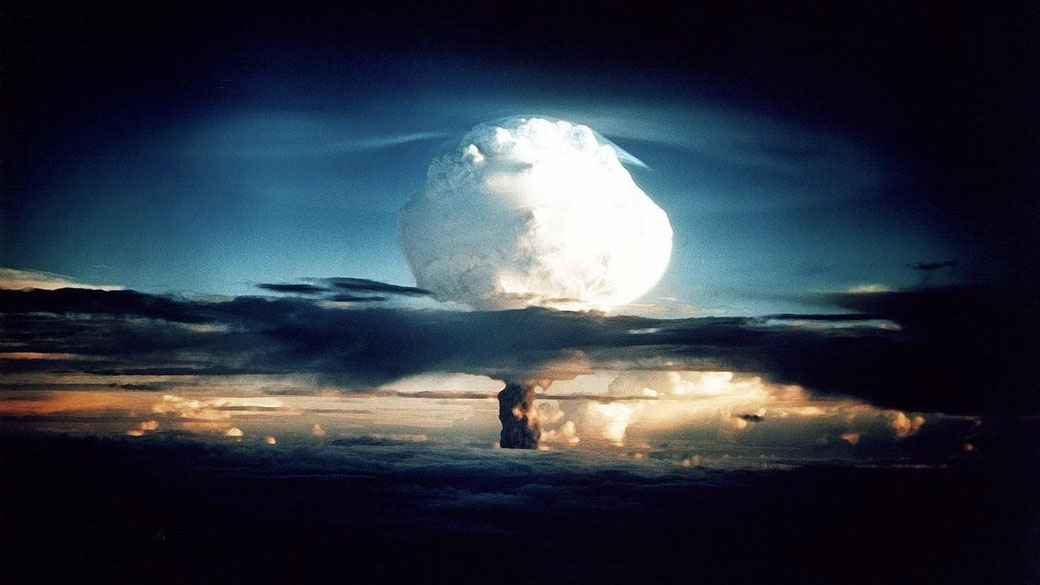The Cold War arms race: a dangerous game of brinksmanship

The Cold War was a time of great political tension, fear, and paranoia, marked by a fierce competition between two superpowers - the United States and the Soviet Union.
At the center of this rivalry was the arms race, a race to build the most advanced and destructive weapons.
The two sides poured billions of dollars into research and development, pushing the limits of military technology and engaging in a dangerous game of brinksmanship.
What was the 'arms race'?
The arms race was a period of intense competition between two superpowers, the United States and the Soviet Union, during the Cold War.
It was a competition to build up military capabilities, particularly in nuclear weapons and delivery systems, as both sides sought to maintain a balance of power.
This competition led to a massive buildup of nuclear arsenals, with both sides developing increasingly powerful and sophisticated weapons.
The arms race also extended to other areas of military technology, including tanks, aircraft, and other weapons systems.
What caused this competition?
The arms race was primarily caused by the intense political and ideological rivalry between the United States and the Soviet Union during the Cold War.
Both sides saw themselves as competing for global dominance, and military power was seen as a key tool in achieving that dominance.
The arms race was also fueled by a deep sense of mistrust and suspicion, with both sides believing that the other was seeking to gain an advantage militarily.
The development of nuclear weapons by both the United States and the Soviet Union also contributed to the arms race, as each side sought to maintain a balance of power in order to deter the other from launching a nuclear attack.
How it all began
The historical background to the arms race can be traced back to the aftermath of World War II, which left the United States and the Soviet Union as the two dominant superpowers in the world.
The end of the war marked the beginning of a new era of international relations, characterized by intense political and ideological competition between the two sides.
The United States and the Soviet Union had different visions for the post-war world, with the US advocating for capitalism and democracy, while the Soviet Union promoted communism and socialism.
Tensions between the two sides quickly escalated, with each side viewing the other as a threat to its own security and way of life.
The development of nuclear weapons in the 1940s added a new dimension to the rivalry between the United States and the Soviet Union.
The US had developed the atomic bomb during the war, and in 1949 the Soviet Union successfully tested its own atomic bomb.
This marked the beginning of a new era in which both sides sought to develop increasingly powerful and sophisticated nuclear weapons in order to maintain a balance of power.
The increasing investment by both sides
Throughout the 1950s and 1960s, the arms race escalated as both sides developed ever more advanced nuclear weapons and delivery systems.
The United States developed the intercontinental ballistic missile (ICBM), a long-range missile capable of delivering a nuclear warhead anywhere in the world.
The Soviet Union responded by developing its own ICBMs, and also built a large fleet of nuclear submarines capable of launching missiles from underwater.
The arms race also extended to other areas of military technology. Both sides developed new aircraft, tanks, and other weapons systems, each trying to gain an advantage over the other.
The United States and its NATO allies built up a large military presence in Europe, while the Soviet Union maintained a large standing army and deployed troops in various parts of the world.
How it all came to an end
The arms race had a profound impact on both sides. The United States and Soviet Union spent billions of dollars on military research and development, diverting resources away from other areas such as education, healthcare, and social welfare.
The constant threat of nuclear war also created a climate of fear and anxiety, as people on both sides of the Iron Curtain lived with the constant possibility of a catastrophic global conflict.
In the 1980s, the arms race reached its peak as the United States and Soviet Union built up their nuclear arsenals to unprecedented levels.
However, the enormous cost of maintaining these arsenals, coupled with the growing recognition of the dangers of nuclear war, eventually led to a shift in priorities.
In the late 1980s and early 1990s, the United States and Soviet Union began to negotiate arms control agreements, culminating in the signing of the Strategic Arms Reduction Treaty (START) in 1991.
Implications for the modern world
The arms race during the Cold War was a defining feature of the era, shaping international relations and global politics for decades.
While it had a profound impact on both the United States and Soviet Union, it also had broader implications for the world as a whole, raising questions about the role of military power in international affairs and the importance of diplomacy and arms control in preventing conflict.
What do you need help with?
Download ready-to-use digital learning resources
Copyright © History Skills 2014-2024.
Contact via email
With the exception of links to external sites, some historical sources and extracts from specific publications, all content on this website is copyrighted by History Skills. This content may not be copied, republished or redistributed without written permission from the website creator. Please use the Contact page to obtain relevant permission.





